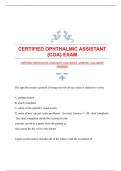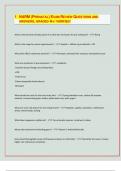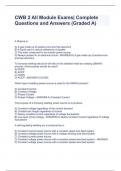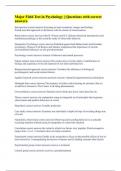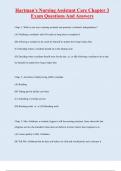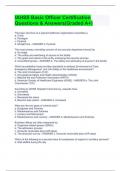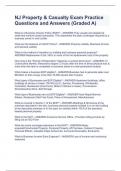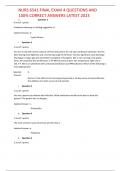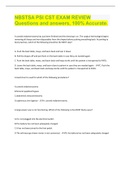Exam (elaborations)
CERTIFIED OPHTHALMIC ASSISTANT {COA} EXAM |VERIFIED |ACCURATE ANSWERS
- Course
- Institution
The specific reason a patient is being seen for an eye exam is referred to as the A. patient history B. chief complaint C. status of the patient's visual acuity D. onset of any current vision problems - Accurate AnswerB. chief complaint The chief complaint should be recorded in the pati...
[Show more]
